Persian Tiling
Tiling is one of the most important traditional handicrafts and art forms in Iran. Examples of Achaemenid’s glazed bricks used in Persepolis and Susa, as well as the beautiful patterns of tileworks in the Achaemenid, Parthian and Sassanid periods and, the pinnacle of this art’s beauty, evident in Isfahan's turquoise tiles, which are used in ornamenting the historical inscriptions of the Seljuk era’s minarets, are all explanatory that the history of tilework in Iran dates back to 2 to 3 centuries B.C.
At the beginning, this art form was implemented by glazed bricks and was mostly used for strengthening the structures and creating the facades, but gradually, tiling got to be applied for the buildings’ and their façades’ decoration. In Iran, the use of tilework for the building’s stability as well as tile decorating, began in the Seljuk period and during prolonged centuries, especially in the Timurid and Safavid periods, this Persian art form reached its zenith. Although tilework in Iran was highly regarded before Islam, but after the advent of this religion, this form of art adopted another application and was used to decorate mosques, schools and mausoleums.
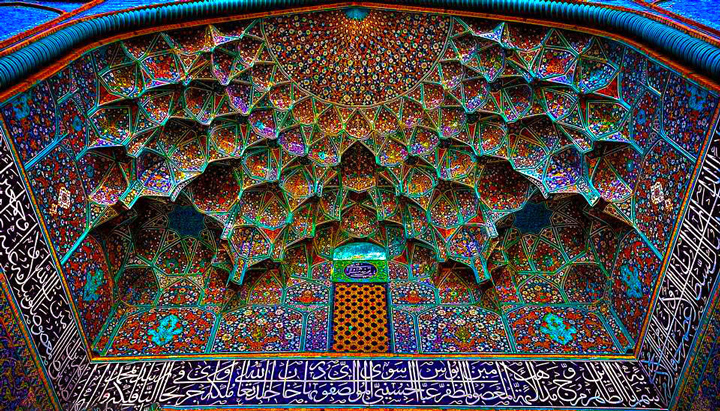
Sheikh Lotfollah Mosque, Isfahan, Iran

Goharshad Mosque, Mashahad, Iran

The art of Tiling, Qajar period
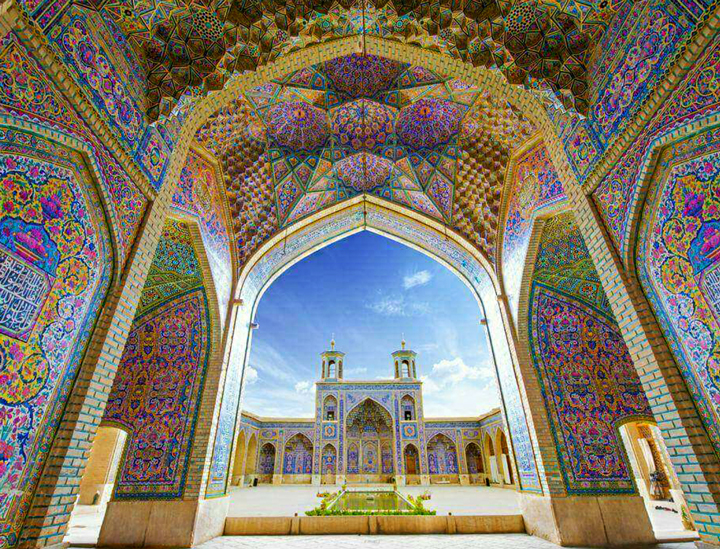
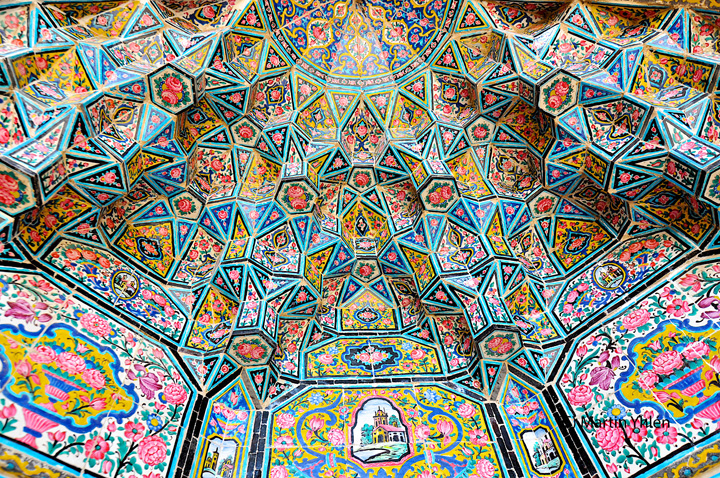
Nasir ol-Molk Mosque, Shiraz, Iran

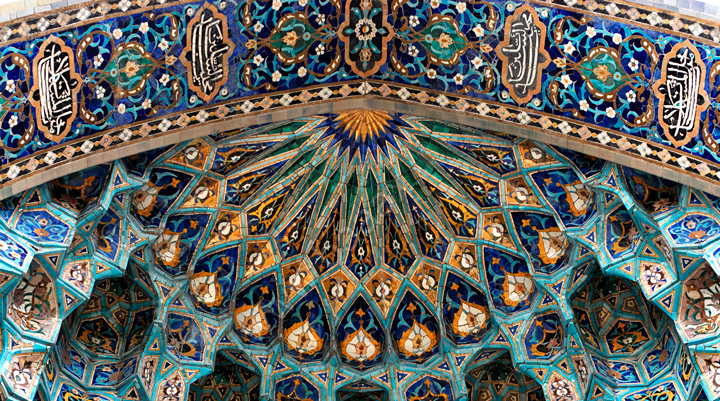
Holy Shrine of Imam Reza, Mashhad, Iran
Gradually, tiles with floral motifs, and in particular clay and Haft Rang (seven colors) tiles which were typically used for mosques, were also applied in houses. The masters of Persian tilework exceeded the implementation of floral designs and geometric shapes and made it common to use animal and bird figures in ornamenting palaces and houses.
Among the most famous Iranian tiling styles are Moarragh, Moagheli, Moshabbak, Haft Rang and Mogharnas. Also some famous tile worked buildings in Iran include Sheikh Lotfollah Mosque and Chehelsotoun Palace in Isfahan, Moaven ol-Molk Tekyeh in Kermanshah, Nasir ol-Molk Mosque and the tomb of Hafiz in Shiraz, Golestan Palace in Tehran, the holy shrine of Imam Reza in Mashhad, etc….

Moaven ol-Molk Tekyeh, Kermanshah, Iran

Jame Mosque, Yazd Iran


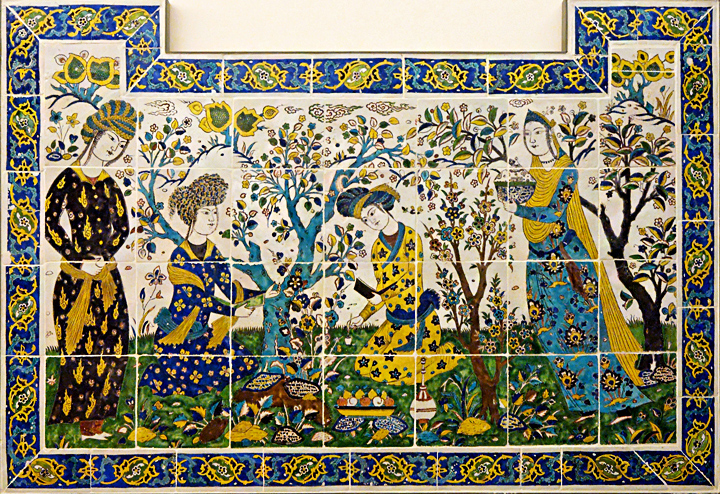
The art of Tiling, Safavid period

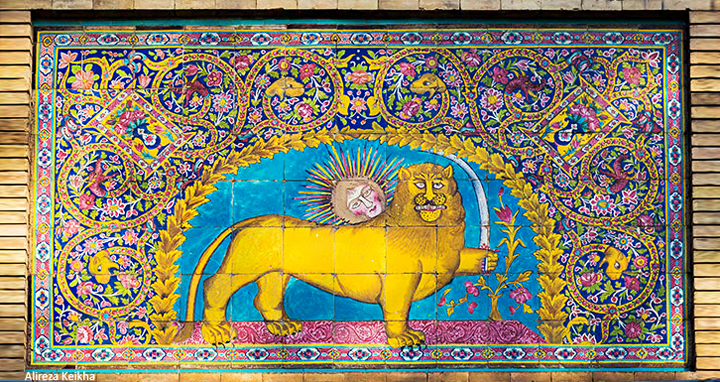
Shams ol-Emare Palace, Tehran, Iran
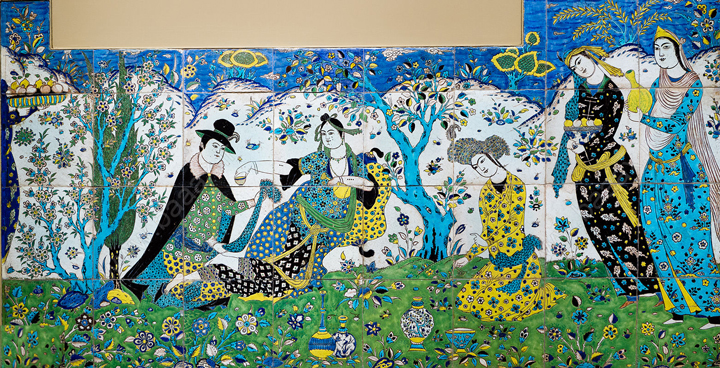
The art of Tiling, Sasanid period
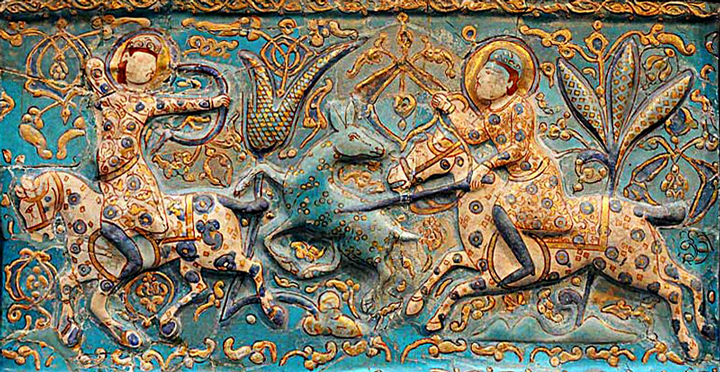
Takht-E-Soleiman, West Azerbaijan, Iran
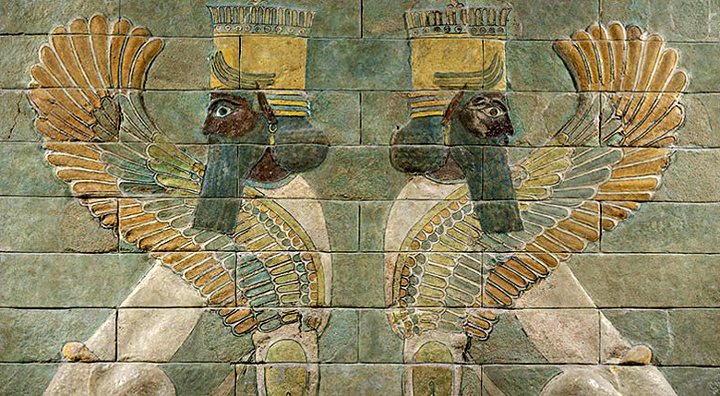
REFERENCES:
